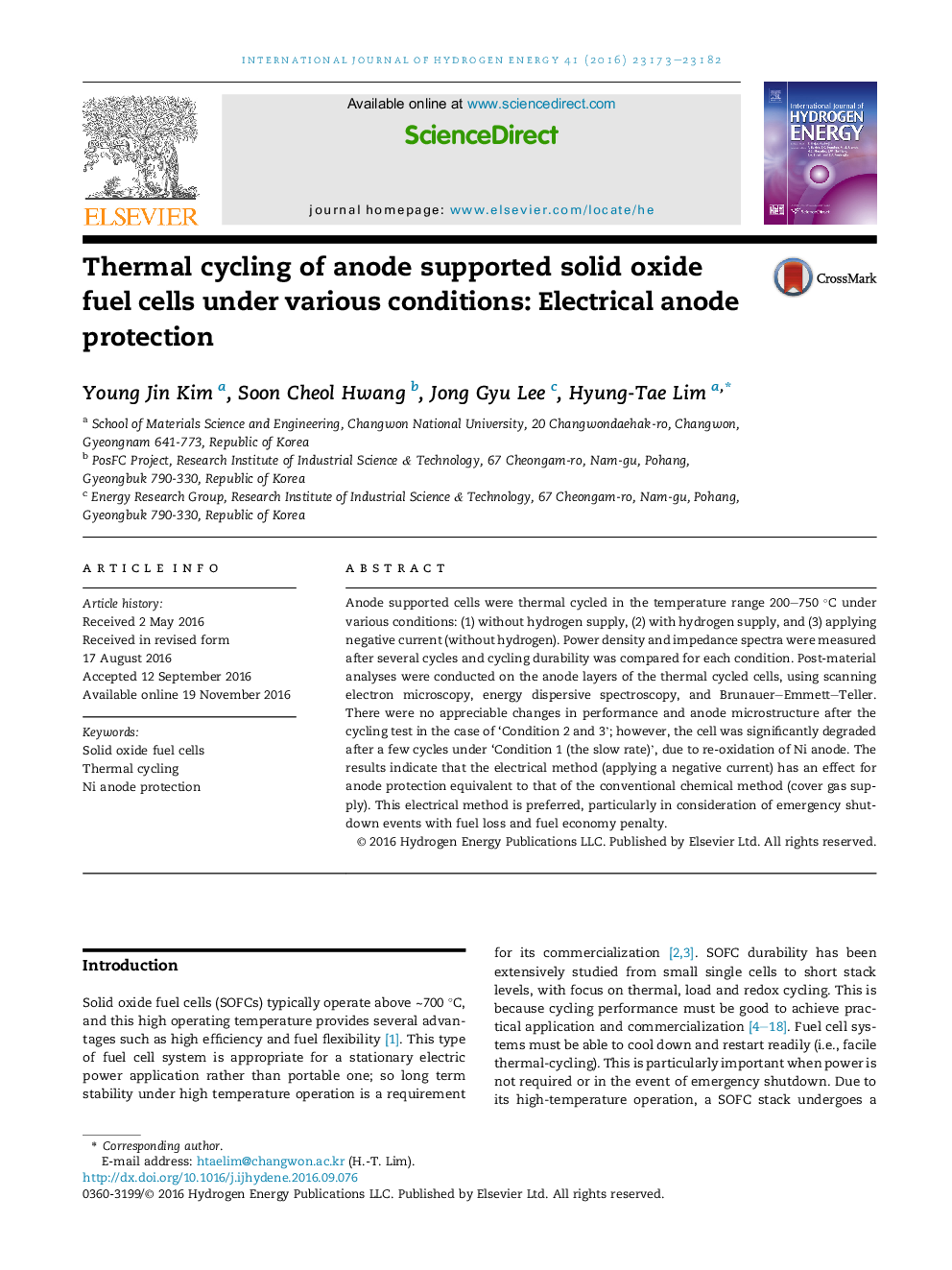| Article ID | Journal | Published Year | Pages | File Type |
|---|---|---|---|---|
| 5145840 | International Journal of Hydrogen Energy | 2016 | 10 Pages |
Abstract
Anode supported cells were thermal cycled in the temperature range 200-750 °C under various conditions: (1) without hydrogen supply, (2) with hydrogen supply, and (3) applying negative current (without hydrogen). Power density and impedance spectra were measured after several cycles and cycling durability was compared for each condition. Post-material analyses were conducted on the anode layers of the thermal cycled cells, using scanning electron microscopy, energy dispersive spectroscopy, and Brunauer-Emmett-Teller. There were no appreciable changes in performance and anode microstructure after the cycling test in the case of 'Condition 2 and 3'; however, the cell was significantly degraded after a few cycles under 'Condition 1 (the slow rate)', due to re-oxidation of Ni anode. The results indicate that the electrical method (applying a negative current) has an effect for anode protection equivalent to that of the conventional chemical method (cover gas supply). This electrical method is preferred, particularly in consideration of emergency shut-down events with fuel loss and fuel economy penalty.
Related Topics
Physical Sciences and Engineering
Chemistry
Electrochemistry
Authors
Young Jin Kim, Soon Cheol Hwang, Jong Gyu Lee, Hyung-Tae Lim,
